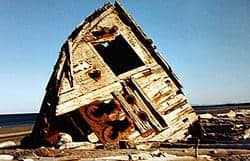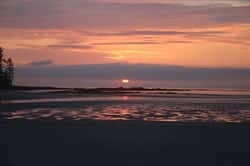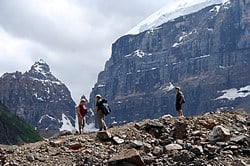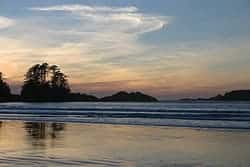Happy 100th Birthday Parks Canada
Parks Canada is celebrating its 100th Anniversary! There are 42 national parks, 167 protected historic sites and 4 marine conservation areas located throughout Canada. It all started in 1911 when bigger crowds began to flock to the wilderness regions of the Rocky Mountains. The park system was then created to protect the regions of Banff, Jasper, Waterton, Yoho and Glacier. However in the beginning the protection was not for conservation reasons but for capitalizing on tourism.
Since 1911 the park system has morphed into a family of parks including the provincial, territorial and regional parks which we like to call the brothers, sisters and cousins of the national parks system. The parks system in Canada provides a sanctuary for various species of wildlife, flora and fauna… as well as provide a designated area for adventure and exploration for explorers, naturalists, locals and travelers.
We have explored the wilderness regions of Canada since 1995 – much of it is in the parks hiking, camping, paddling, fishing and climbing while researching trails, summits, alpine lakes, glaciers and wildflower valleys. The parks system has brought us many moments of extreme happiness and bliss creating a scrapbook of memories we feel compelled to share – both good and bad and bumps and bruises.
Over the years we have amassed a large collection of photos and have written hundreds and hundreds of informational articles about individual parks on our CanadaEH.net Travel Network. Below is a list of some of the parks which have left an impression with us located in British Columbia, Alberta, Yukon and Northwest Territories. Happy Birthday Parks of Canada!
Kootenay National Park is a year round recreation destination situated on the slopes of the Rocky Mountains and on the Continental Divide in the Kootenay region of British Columbia, Canada. The elongated park extends north to south. South being the Rocky Mountain Trench and hot springs. North being high mountain peaks and glaciers.
Fort Steele Heritage Town is a large heritage village situated on the banks of the Kootenay River and backed by the looming Rocky Mountains. The very popular heritage town is located northeast of the community of Cranbrook, BC in the East Kootenay Region of British Columbia, Canada.
Wells Gray Provincial Park is a recreation park in the heart of the Cariboo Mountain Range covering over 540,000 hectares. It was established in 1939 and it is the 4th largest park in British Columbia, Canada. Wells Gray is best accessed from four communities outside the park boundaries – 100 Mile House to the west, Clearwater to the south and Blue River to the east.
Barkerville is British Columbia’s most popular historic mining town located on the Cariboo Gold Rush Trail made popular in the late 1800s. The historic mining town is located on the Heritage Highway (Hwy 26) in a forested region of the Cariboo at the base of the Conklin and Waverly Mountains located east of the communities of Wells and Quesnel, BC, Canada.

Pesuta Shipwreck in Naikoon Park
Naikoon Provincial Park: A Queen Charlotte gem spanning over 69,166 hectares (179, 500 acres) of sandy beaches, rolling sand dunes, forested old growth hiking trails, wetlands, bogs, rock cliffs, marine tidal pools, viewing look-outs, historical shipwrecks, west coast fauna and flora and forests populated with wildlife like the smaller Sitka Deer and the powerful Black Bear.
Gwaii Haanas National Park Reserve : A massive 1470 square km wilderness park which includes evidence of a deep spiritual history of the Haida people throughout the park. As, far back as 10,000 years ago, the land of Gwaii Haanas was home to the Haida people.
Pacific Rim National Park is a protected, sensitive and diverse eco system created by the Government of Canada. The entire park covers over 13,000 hectares – 6000 hectares is marine park and 7000 is on land.

Nels Bight in Cape Scott Park
Cape Scott Provincial Park is a wilderness backpacking adventure located on the northern tip of Vancouver Island in British Columbia, Canada. For years Cape Scott has been a popular destination for backpackers, hikers, bird watchers, photographers and naturalists. The main highlight of the park are the sandy beaches.
Kluane National Park is a 21,980 square kilometre wilderness mountain park in the Yukon Territory popular for hiking, sightseeing, flight seeing, backpacking, rafting, rock climbing, canoeing, mountaineering, fishing, camping, dog sledding, cross country skiing, ice fishing and more.
Liard River Hot Springs Provincial Park is located east of the community of Watson Lake, Yukon Territory on the British Columbia side of the Alaska Highway. The park features a campground, wildlife sightings and two natural hot springs. One is called the Alpha Pool and the other is the Beta Pool. Together they are the largest hot springs in Canada!
Alexandra Falls is part of the Twin Falls Gorge Territorial Park. It is a day use area park located 72 kilometres (45 miles) after the Alberta/NWT Boarder crossing when entering the Northwest Territory traveling the Waterfall Highway (Hwy #1).

Six Glaciers Trail in Banff National Park
Banff National Park is Canada’s oldest national park and one of the country’s most visited year round mountain recreation parks. Established in 1885, the park runs along the same lines as the Continental Divide, the provincial border between Alberta and British Columbia, Canada. Including the Canadian Rocky Mountains.
Kananaskis Country is a system of large protected parklands, ecological reserves and recreational areas in the Canadian Central Rockies Eco System popular for many year round activities.
Waterton Lakes National Park is a year round recreation destination located in the southwest corner of the province of Alberta, Canada. It is a land of mountain peaks, rambling rivers, wildflower meadows, alpine lakes and wildlife sightings… in short, Waterton Lakes National Park is where the prairie grasslands meet the mighty Rocky Mountain Range.
Dinosaur Provincial Park is a World Heritage Site. It includes a Visitor Centre, gift shop, exhibits, concession, day use picnic area, boat launch, playground, campground and hiking trails exploring the landscape of the Canadian Badlands.
Writing on Stone Provincial Park is a sightseeing and historic destination located south of Lethbridge, Alberta on the banks of the Milk River in the Milk River Valley. It is home to Blackfoot First Nation rock art (sandstone paintings) and it is a National Historic Site of Canada.


Leave a Reply
Want to join the discussion?Feel free to contribute!